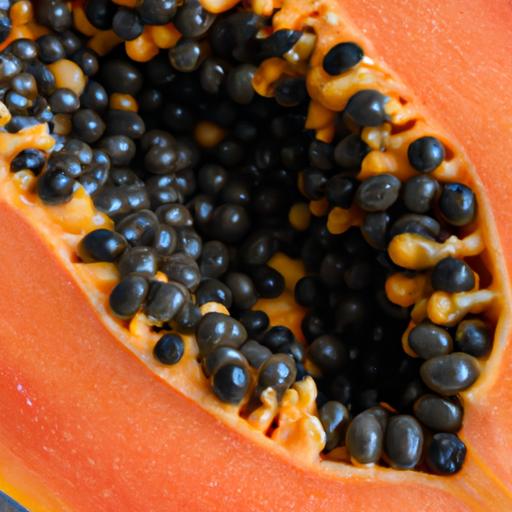How Long Do Grasshoppers Live: Understanding the Lifespan of These Fascinating Insects
Grasshoppers, these intriguing creatures that grace our meadows and gardens, have always captivated our curiosity. Have you ever wondered how long they live? Join me on this journey as we explore the lifespan of grasshoppers and uncover the secrets behind their existence.
Introduction
As we delve into the world of grasshoppers, understanding their lifespan becomes crucial. By unraveling the mysteries surrounding their life cycle, we gain valuable insights into these fascinating insects’ ecological role and the delicate balance they maintain in our ecosystems.
Grasshoppers, belonging to the order Orthoptera, are known for their distinct features, including long hind legs and powerful jumping abilities. They play a vital role in nature as herbivores, feeding on various plant species. Consequently, they influence plant growth and population dynamics, making their lifespan a topic of great interest for scientists and nature enthusiasts alike.
Brief Overview of Grasshoppers and Their Role in Ecosystems
Before we dig deeper into their lifespan, let’s take a moment to appreciate the significance of grasshoppers in our ecosystems. With over 11,000 species worldwide, grasshoppers are found on every continent except Antarctica. Their presence extends from grasslands to forests, showcasing their adaptability to diverse environments.
Grasshoppers act as crucial players in the food chain, serving as a vital food source for numerous predators, including birds, reptiles, and mammals. Additionally, their feeding habits help control plant populations, preventing overgrowth and maintaining a healthy ecosystem balance.
Now that we understand the importance of these remarkable insects, let’s embark on a quest to uncover the secrets behind their lifespan. Join me in the next section as we explore the different stages of a grasshopper’s life and the factors that influence their longevity.
Stay tuned for an exciting exploration into the intriguing world of grasshoppers and their lifespan!
Grasshopper Lifespan: Overview
A. Definition and Characteristics of Grasshoppers
Grasshoppers, these fascinating insects, encompass a diverse group of species characterized by their unique features and behaviors. With their distinctive long hind legs designed for jumping and prominent wings, grasshoppers are renowned for their acrobatic displays.
These insects undergo incomplete metamorphosis, progressing through three main life stages: egg, nymph, and adult. The egg stage is where a female grasshopper deposits her eggs into the soil, ensuring their protection and survival. Once hatched, the nymphs emerge, resembling miniature versions of their adult forms. As they grow, they undergo a series of molts, shedding their exoskeletons to accommodate their increasing size. Finally, they reach adulthood, where they develop functional wings and reproductive capabilities.
B. Factors Influencing the Lifespan of Grasshoppers
The lifespan of grasshoppers can vary significantly depending on various factors. One crucial aspect is the species to which they belong. Different grasshopper species have distinct lifespans, ranging from a few weeks to several months. Environmental conditions also play a vital role, as grasshoppers thrive in warm environments with an abundance of vegetation.
Nutrition is another critical factor affecting their lifespan. Grasshoppers primarily feed on plant material, and the availability and quality of their food source can impact their longevity. A diet rich in nutrients promotes healthier growth and a longer lifespan.
Furthermore, predators and diseases can influence grasshopper populations and their lifespan. Predatory birds, rodents, and insects are natural enemies of grasshoppers, posing threats to their survival. Additionally, diseases such as fungal infections can impact their health and lifespan.
Understanding these factors provides us with valuable insights into the intricate balance that governs the lifespan of grasshoppers. Join me in the next section as we delve into the specific life stages of these remarkable insects and uncover the mysteries behind their development.
Life Stages of Grasshoppers
Grasshoppers undergo a fascinating transformation throughout their lives, progressing through distinct stages. Let’s explore each of these stages and gain a deeper understanding of their development.
A. Egg Stage: Duration and Development Process
The life of a grasshopper begins with the egg stage, where female grasshoppers deposit their eggs in the soil or attach them to plant stems. These eggs are protected by a hardened casing, known as an ootheca. The duration of this stage varies depending on the species and environmental conditions, ranging from a few weeks to several months.
During this period, the eggs remain dormant, patiently awaiting the arrival of favorable conditions, such as warm temperatures and moisture, to hatch. Once the conditions are ideal, tiny grasshopper nymphs emerge from the eggs, ready to embark on their journey.
B. Nymph Stage: Description and Growth Patterns
As the grasshopper nymphs emerge from their eggs, they resemble miniature versions of their adult counterparts. However, they lack fully developed wings and reproductive capabilities. These nymphs go through a series of molts, shedding their exoskeletons and growing larger with each molt.
Each molt brings them closer to adulthood, and with every stage, their wings develop further. Nymphs resemble adults more closely with each molt, and their ability to jump and feed becomes more pronounced. This stage, marked by growth and transformation, can last for several weeks or months, depending on the species and environmental conditions.
C. Adult Stage: Features and Reproductive Period
The final stage of a grasshopper’s life is the adult stage, characterized by fully developed wings and reproductive capabilities. At this stage, grasshoppers have reached their maximum size and exhibit the distinctive features that make them easily identifiable.
Adult grasshoppers play a crucial role in the continuation of their species, engaging in courtship rituals and mating. The duration of the adult stage varies among grasshopper species, ranging from a few weeks to several months. During this time, they actively feed, reproduce, and contribute to the ecological balance of their habitats.
With a deeper understanding of the life stages of grasshoppers, we can appreciate the remarkable journey these creatures undertake. Join me in the next section as we unravel the average lifespan of grasshoppers and the factors that influence their longevity.
Longevity in Grasshoppers: Exceptional Cases
While the average lifespan of grasshoppers provides us with valuable insights, there are exceptional cases that defy the norm. Join me as we explore these extraordinary instances of long-lived grasshoppers and uncover the factors that contribute to their exceptional lifespan.
A. Examples of Unusually Long-Lived Grasshoppers
Nature never fails to surprise us with its wonders, and the realm of grasshoppers is no exception. Several species have been observed to live significantly longer than their counterparts. One such example is the Brachystola magna, commonly known as the Giant Grasshopper. This remarkable creature boasts an average lifespan of up to three years, which is considerably longer compared to other grasshopper species.
B. Environmental and Genetic Factors Contributing to Exceptional Lifespan
The longevity of these exceptional grasshoppers can be attributed to a combination of environmental and genetic factors. Environmental conditions play a crucial role in shaping the lifespan of these insects. For instance, grasshoppers living in areas with abundant food resources and favorable climates tend to have longer lifespans. Adequate nutrition and favorable temperature conditions allow for optimal growth and development, leading to extended lifespans.
Genetic factors also play a significant role in determining the lifespan of grasshoppers. Certain genetic variations may confer increased resistance to diseases, predators, or environmental stressors, allowing these grasshoppers to live longer lives. Scientists continue to study the genetic makeup of these exceptional grasshoppers to unravel the specific genes and mechanisms responsible for their extended lifespans.
By exploring these exceptional cases, we gain a deeper understanding of the intricate factors that influence the lifespan of grasshoppers. Join me in the next section as we draw our conclusions and reflect on the significance of ongoing research in this field.
Conclusion
In conclusion, understanding the lifespan of grasshoppers is crucial for comprehending their role in ecosystems and the delicate balance they maintain. Through research studies and findings, we have uncovered a wealth of knowledge regarding the average lifespan of these fascinating insects.
It is important to note that the average lifespan of grasshoppers can vary significantly across different species. Factors such as environmental conditions, genetic makeup, and availability of resources all play a role in determining their longevity. While some grasshoppers may only live for a few months, others have been known to exceed expectations and live for several years.
By delving into exceptional cases of long-lived grasshoppers, we discover the intricate interplay between environmental and genetic factors that contribute to their extended lifespan. These exceptional individuals provide valuable insights into the potential longevity of grasshoppers beyond the average lifespan.
Continued research and exploration into the lifespan of grasshoppers will enable us to unlock even more secrets about these remarkable creatures. As we expand our knowledge, we can further appreciate their significance in maintaining the delicate balance of our ecosystems.
So, the next time you spot a grasshopper hopping through the grass or hear its distinctive chirping song, take a moment to marvel at the intricate life cycle and potential longevity of these captivating insects.
Thank you for joining me on this journey to uncover the lifespan of grasshoppers. Keep exploring, stay curious, and let nature’s wonders continue to inspire you.


